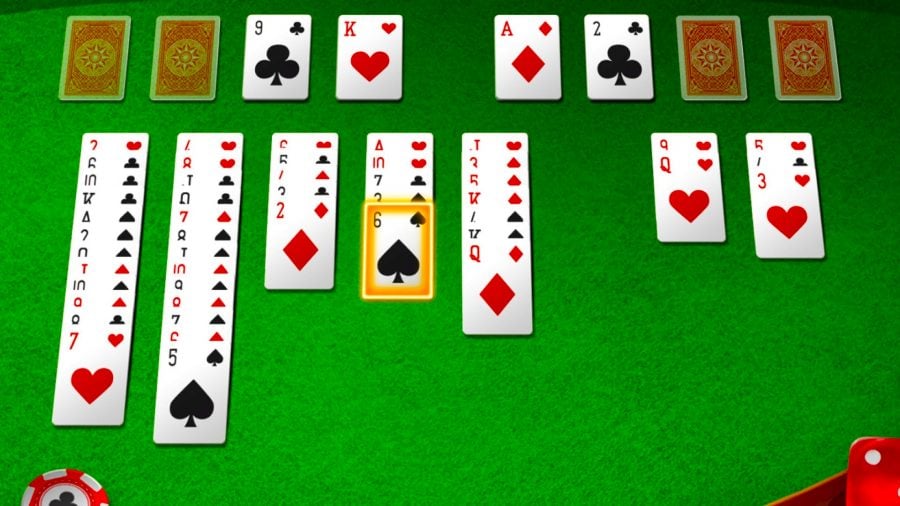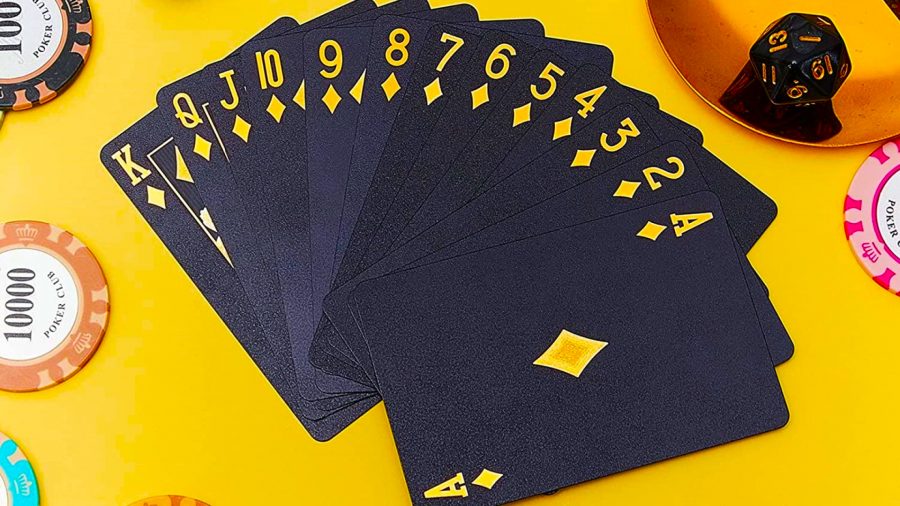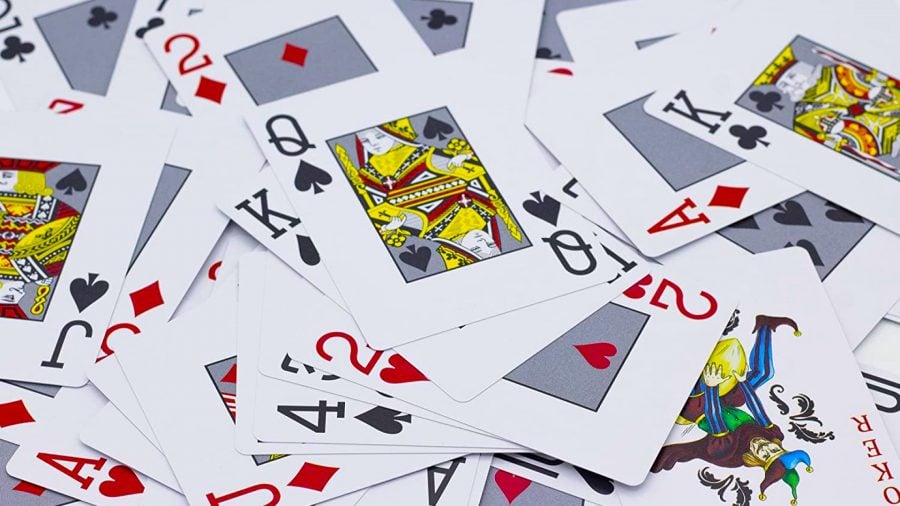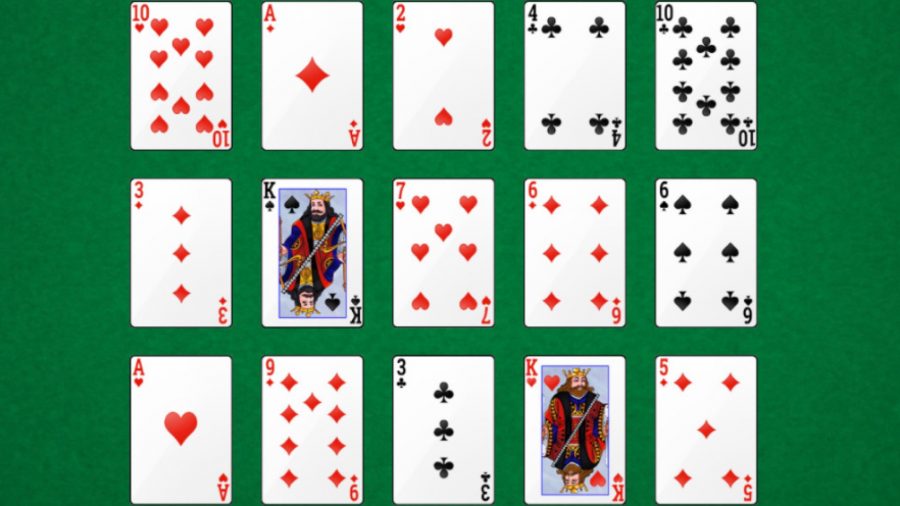This guide teaches how to play Solitaire for beginners, including basic rules, how to win, different versions, and other questions. We’ll start by explaining standard (or ‘klondike’) solitaire in more detail, and then we’ll look at a few alternatives.
Also called ‘Patience’, this single player system is the king of playing card games. For something more involved, you might like to check out our choices for the best card games on the market, but Solitaire really is worth giving a go using this guide first.
Solitaire can be therapeutic and satisfying, or it can be intense and frustrating – but even in the bad times, there’s an addictive quality that makes you shuffle your cards and jump right back in. But what if you’ve never played solitaire before? How do you win? Can you play competitively? What’s with all the different versions?
Here’s the guide on how to play solitaire:
- How to set up solitaire
- How to win solitaire
- How to play solitaire
- How to play pyramid solitaire
- How to play double solitaire

How to set up solitaire
To set up a game of solitaire, you’ll need a standard, shuffled deck of 52 playing cards (note that, if your deck includes joker cards, these should be removed). Begin by dealing these out into a ‘tableau’ of seven piles. The first pile has one card in it, the second has two, and so on until you reach pile seven. Turn the top card of each pile face-up, and place the remaining deck of cards face-down in its own pile (known as ‘the stock’).
You’ll also need to leave space for five more piles of cards – these will begin to fill as you play. The first of these is the ‘waste’ pile, which is placed next to the stock pile. The remaining four piles will be your ‘foundation’ – and these are key to winning a solitaire game.

How to win solitaire
A game of solitaire is won when the stock and tableau are empty, and each card in the deck has been placed in its correct position in the foundation. The foundation is organised by suits, as well as in ascending order. This means, in a successful game of solitaire, you’ll end up with four piles of ordered suit cards – with the ace on the bottom, and the king on top.

How to play solitaire
Start by moving any aces visible in the tableau to a space in the foundation. As you move cards out of the tableau, you can immediately turn down the next face-down card underneath the card you moved.
Continue moving the lowest numbers in the tableau to their space in the foundation. For example, if you already have the ace of diamond in the foundation, and you can see the two of diamonds in the tableau, you can place the two on top of the ace – and you can place the three on top once that becomes visible, too.
If you can’t see any cards in the tableau that can be moved to the foundation, you can move some of the cards in these piles around. Face-up cards can be moved to the top of another pile in the tableau – as long as the card you’re moving is one number lower and is the opposite colour of the card you plan to place it on top of. For example, you could place a seven of hearts or diamonds on top of an eight of spades or clubs. This can help you turn more cards in the tableau face-up – meaning there are more potential cards to move into the foundation.
You can also move more than one card to a different tableau pile at a time, as long as the rules about colour and order are still followed. For example, a black six card and a red seven behind it could both be moved onto a black eight card in another pile. Additionally, a king can be moved to any empty tableau pile.
If there are still no cards in the tableau that can be moved to the foundation, draw three cards from the stock pile, and place them face-up in the waste pile. You can only move the top card of the waste pile (either to the tableau or the foundation), but you can keep drawing cards from the stock, three at a time. If you empty the stock and the top card in the waste pile can’t be moved, flip the waste pile over, and you can start drawing again.
As said before, you win when all the cards have been moved to their correct place in the foundation. If at any point, you can’t move any cards, the game is over.

How to play pyramid solitaire
In this solitaire variation, begin by dealing a shuffled deck of cards into seven rows. Starting from the top row with one card, each card must be partially covered by two other cards – so row two has two cards, row three has three, and so on until you reach the seventh row with seven cards.
Place the remaining cards face-down to create the stock pile, and leave space for a waste pile next to or beneath it. Pyramid solitaire is played by drawing a card from the stock, and then matching it with either an uncovered card in the pyramid, or the top card of the discard pile. If neither move is possible, the card drawn goes on top of the discard pile.
To ‘match’ cards, you need to create the number 13 by adding the value of the card drawn to the value of another uncovered card. For example, an eight and a five could be matched together. An ace is worth one, a jack is worth 11, a queen is worth 12, and a king is worth 13 – this means that an uncovered king can immediately be removed from the game. Place matched cards in a separate pile to the side to keep them out of the way. Just like in klondike solitaire, the aim of the game is to clear every card in the deck – and play stops if no more matches can be made.

How to play double solitaire
This is another version of klondike solitaire, but now it’s competitive. Each player starts with their own deck of 52 cards, setting up their half of the table to look like a regular, one-player version of klondike solitaire – so that’s seven tableau piles with an ascending number of cards, four spaces in the foundation, a stock pile, and a space for the waste pile. You should end up with two setups next to each other or facing each other.
In double solitaire, players share the eight foundation spaces. This means you can start or add to any foundation pile, even if the other player has been placing cards there. The aim is to be the first player to have cleared your deck – you can play by taking turns, or you can choose to race each other.
And that’s really all you need to know to get started playing Solitaire. If you find yourself craving a more sociable experience, invite a few pals over and try our guide to the best party board games – or even roll out Wargamer’s scientifically proven list of 150+ spicy spicy Truth or Dare questions to get everyone cackling.
